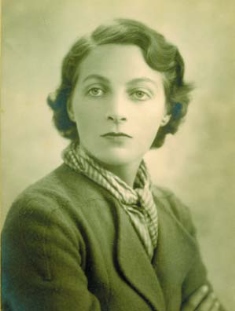Mary Potter (painter) facts for kids
Mary Potter (born Marian Anderson Attenborough on April 9, 1900 – died September 14, 1981) was a talented English painter. She was known for her unique style, often using soft, gentle colors in her artworks. Her paintings have a calm and subtle feel to them.
After studying art at a famous school called the Slade School of Fine Art, Mary began showing her paintings in London in the early 1920s. As she got older, her art became more and more abstract. This means her paintings started to show ideas and feelings rather than clear, realistic pictures. She became much more well-known for this style from the 1950s onwards.
Mary Potter's Early Life and Art Journey
Mary Potter was born in a town called Beckenham in Kent, England. Her parents were Arthur Attenborough, who was a lawyer, and Kathleen Mary. Mary went to school in Beckenham and also studied art there. In 1918, she joined the Slade School of Fine Art, which was a very important art school. She was a brilliant student and won many awards, including a top prize for painting portraits of people.
After finishing her studies, Mary shared an art studio in London. This area was known for being a creative and artistic place. She briefly joined an art group called the Seven and Five Society. She also showed her paintings with other famous art clubs like The New English Art Club and The London Group. Mary worked with both oil paints and watercolors.
In 1927, she married Stephen Potter, who was a writer and worked in radio. They had two sons, Andrew and Julian. Mary had her first art show all by herself in 1932. During World War II, her family moved out of London for a while but came back later. Mary painted many different things, including still life pictures (like bowls of fruit), landscapes (scenes of nature), and portraits of people. One famous person she painted was the actress Joyce Grenfell.
Later Years and Growing Fame
In 1951, Mary and her husband moved to a coastal town called Aldeburgh in Suffolk. They lived in a house called The Red House. After her divorce in 1955, Mary swapped houses with the famous composer Benjamin Britten and moved into Crag House. She became good friends with Benjamin Britten. With her children grown up, Mary spent many hours painting.
She started mixing beeswax with her paints. This made her paintings look soft and glowing, almost chalky. She used a special range of pale and subtle colors. Her art became even more abstract during this time. A museum director named Kenneth Clark once said that Mary's paintings were "enchanting moments of heightened perception." This means her art helped people see and feel things in a very special way.
During the 1960s and 1970s, Mary Potter became more and more famous. She had many solo art shows at the New Art Centre in London. In 1979, she received a special award called the OBE (Order of the British Empire) for her contributions to art. Big art shows of her work were held at the Tate Gallery in 1980 and the Serpentine Gallery in 1981. These shows were very popular and received great reviews.
A few months before she passed away, an art critic named Marina Vaizey wrote about Mary's paintings. She said Mary's art used "exquisite tensile webs of pale resonant colour." This means her paintings had delicate layers of beautiful, soft colors. The subjects in her paintings almost disappeared, but they still hinted at the richness of life. In 1981, Mary also won the John Moores prize, which helps new artists get noticed.
William Packer, another art critic, described Mary Potter's work as "very English, and very good." He even compared her paintings to those of another famous artist, Victor Pasmore. Mary Potter died in Aldebburgh in 1981 at the age of 81.
See also
In Spanish: Mary Potter para niños


